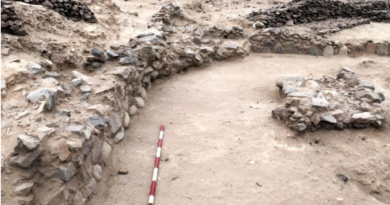Archaeologists in Morocco discover oldest bone tools for clothes making
Archaeologists in Morocco unearthed clothing-making tools made of bone that are thought to date back 120,000 years, according to one of the experts. The tools may be the earliest ever discovered.
“It’s a significant find because, while earlier bone tools have been discovered elsewhere, this is the first time we’ve identified bone tools (this ancient) that were used to construct garments,” Moroccan archaeologist Abdeljalil El Hajraoui said.
The international team unearthed more than 60 tools in Contrebandiers (Smugglers) Cave, which is located less than 20 kilometres (12 miles) from the capital of the North African country.
They were “specifically tailored for certain tasks such as leather and fur works,” the researchers noted in a paper published in the journal iScience.
According to El Hajraoui, a researcher at the National Institute of Archaeology and Cultural Heritage, the discovery could help address concerns about the origins of modern human conduct (INSAP).

He told Agence France-Presse that “sewing is a behaviour that has lasted” from prehistory (AFP).
“Tools like those found in the cave have been used for 30,000 years, demonstrating the origin of collective memory.”
According to the i-Science research, “considering the level of specialisation of the bone tool material culture at Contrebandiers Cave, earlier specimens are expected to be uncovered.”
The researchers also uncovered residential chambers carved into the ground or created inside the cave, as well as perforated seashells that appeared to be used as ornamentation.
“This was a cultural progression that requires further investigation,” El Hajraoui added.
Morocco has been the site of several significant archaeological discoveries, most recently on Wednesday, when the country’s culture ministry announced that researchers in a cave near Essaouira, about 400 kilometres (250 miles) southwest of Rabat, had discovered a collection of about 30 shaped marine snail shells dating back up to 150,000 years.
They were described as “the earliest decorations ever uncovered” in a statement.
In July, scientists announced the discovery of North Africa’s oldest Stone Age hand-axe manufacturing facility, going back 1.3 million years.
The discovery pushed back the founding date of the Acheulian stone tool industry linked with a major human ancestor, Homo erectus, in North Africa by hundreds of thousands of years, researchers on the team told journalists in Rabat.
The discovery of five fossils estimated to be 300,000 years old, at Jebel Irhoud in Morocco in 2017 upended evolutionary research when they were declared Homo sapiens.




